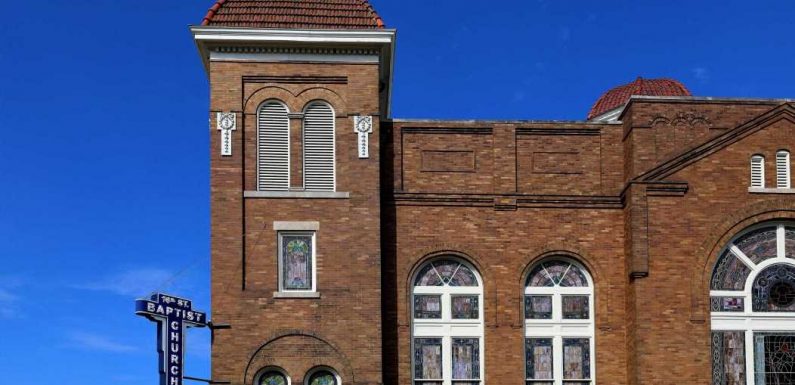
James Baldwin prophetically predicted these times, in which righteous protest and violent insurrection have erupted almost in tandem, when he asserted: “We can disagree and still love each other, unless your disagreement is rooted in my oppression and denial of my humanity and right to exist.” And after we’ve spent months of standing still, locked inside, often afraid, there are few better ways to reacquaint ourselves with this country—and one another—than by driving the official U.S. Civil Rights Trail and visiting the locations, many of them national monuments, where brave Americans have already changed the narrative once before.
Coordinated mainly by state tourism agencies, the U.S. Civil Rights Trail was formalized in 2018 as a means to honor the mid-20th-century Black freedom struggle. Stretching from Wilmington, Delaware, to Topeka, Kansas, with a vast sweep through the South, the route includes more than 130 historically significant sites, from churches to courthouses, museums to memorials: places where hope unfolded. I’ve driven it in countless combinations, wending my way through different states and capitals; the experience is moving no matter which way you go.
In Birmingham’s Civil Rights District—once a hotbed of action, now a tranquil downtown neighborhood—I’ve walked the sites that mark this turbulent era, including 16th Street Baptist Church, where four young Black girls were murdered, and Kelly Ingram Park, where leaders like Dr. Martin Luther King Jr. led protests during the 1963 Birmingham Campaign, a stirring movement propelled by bursts of collective action, from lunch counter sit-ins to buying boycotts. Across the street, at the Birmingham Civil Rights Institute, black-and-white photographs show children being assaulted with high-powered water cannons and accosted by police wielding batons and attack dogs. When these images first appeared on televisions and in newspapers around the country, they prompted many white Americans to rethink the story of America. The institute also houses the barred door of the jail cell that once confined King’s body, though not his spirit. Touching those bars is, for me, a surreal journey of the imagination, a powerful reminder of one man’s unflinching conviction.
Further southwest, in Jackson, Mississippi, interactive exhibits at the Mississippi Civil Rights Museum continue the tale of racial terror and white economic control. It is no easy feat to walk between the columns that detail an endless list of lynched innocents as audio tracks of white Mississippians berating Black customers blare overhead. “Don’t be touching that!” “We don’t serve your kind in here!” I remember wondering, as I absorbed this barrage of verbal attacks, how I might react if I were spoken to that way. The placid teal-and-brick ranch house exterior of the Medgar and Myrlie Evers Home National Monument, where the civil rights martyr and his family lived before he was gunned down in his driveway in 1963, belies the danger that lurked inside, where children’s mattresses were laid on the floor and window heights raised to avoid bullets. It is painful to be reminded of the ways African Americans have had to adapt in the face of threats both unseen and expected—a fact of life that persists today, if in different forms. Black parents give children The Talk, with all its endless clauses: how to act when Driving While Black, Sleeping While Black, and Walking While Black.
Even as contemporary America grapples with the cultural divisions created by competing stories of who, how, and why we are, I know that by revisiting our history along the U.S. Civil Rights Trail, we can be better. In the eternal words of the civil rights activist Ella Baker: Give light, and people will find a way. Civilrightstrail.com
This article appeared in the July/August 2021 issue of Condé Nast Traveler. Subscribe to the magazine here.
Source: Read Full Article









